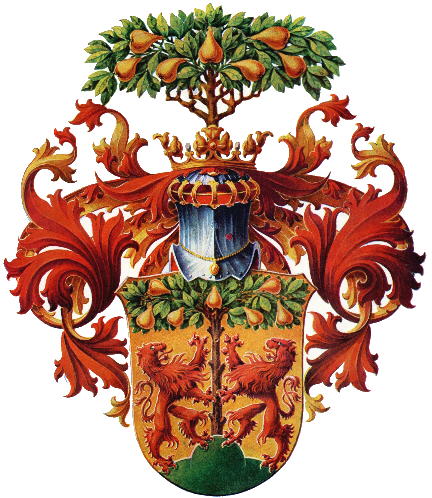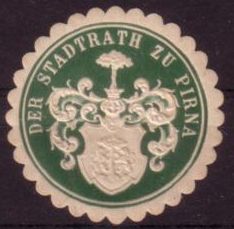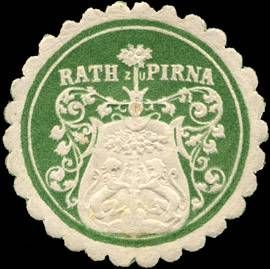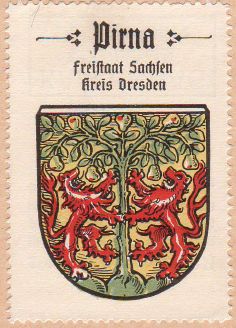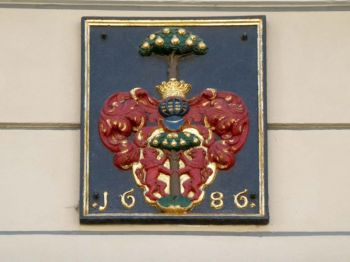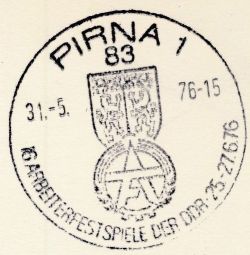Pirna: Difference between revisions
Knorrepoes (talk | contribs) m (Text replacement - "{{de}}" to "") |
Knorrepoes (talk | contribs) m (Text replacement - "{| class="wikitable"↵|+Official blazon↵|-↵|'''German'''↵| ↵|-↵|'''English''' ↵| {{blazon wanted}}↵|}" to "{| class="wikitable" |+Official blazon |- |'''German''' | blazon wanted |- |'''English''' | blazon wanted |}") |
||
| Line 14: | Line 14: | ||
|- | |- | ||
|'''German''' | |'''German''' | ||
| | | blazon wanted | ||
|- | |- | ||
|'''English''' | |'''English''' | ||
| | | blazon wanted | ||
|} | |} | ||
Revision as of 08:08, 6 April 2023
PIRNA
State : Sachsen
District (Kreis) : Sächsische Schweiz-Osterzgebirge (until 2008 Sächsische Schweiz)
Additions : 1850 Hausberggemeinde; 1922/23 Copitz, Hinterjessen, Neundorf, Niedervogelgesang, Posta, Rottwerndorf, Zuschendorf;1930 Zehista; 1950 Cunnersdorf, Mockethal, Zatzschke; 1971 Liebethal; 1974 Krietzschwitz, Obervogelgesang;
1999 Birkwitz-Pratzschwitz, Bonnewitz, Graupa
| German | blazon wanted |
| English | blazon wanted |
Origin/meaning
The arms are canting, showing a pear (Birne) tree. The oldest known seal of the city dates from 1299 and already shows a pear tree.
A later 14th century seal also showed the tree. In the 15th century the city became a part of Bohemia, and on August 23, 1549 King Ferdinand I granted the arms with the lion of Bohemia under the tree. The complete arms as granted in 1549 also show the helmet and crest.
During the mid 20th century the city used the small arms as shown below, at present the large historical arms are used again.
| Seal from around 1900 |
Seal from around 1900 |
| The arms by Hupp in the Kaffee Hag albums +/- 1925 |
The arms in the city (source) |
| Postal cancellation 1976 |
Postal cancellation 1983 |
Literature: Bensing et al., 1984; Hupp, O: Kaffee Hag albums, 1920s
